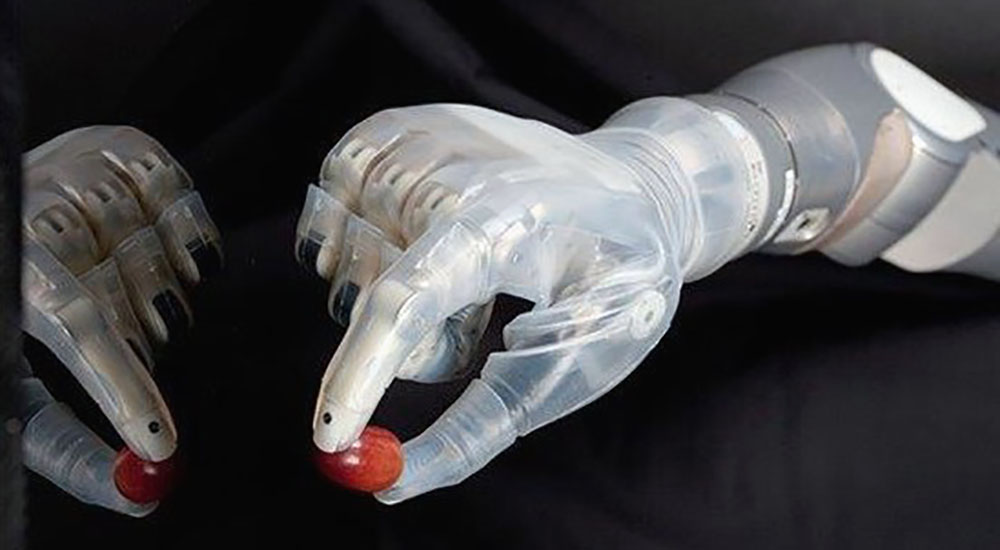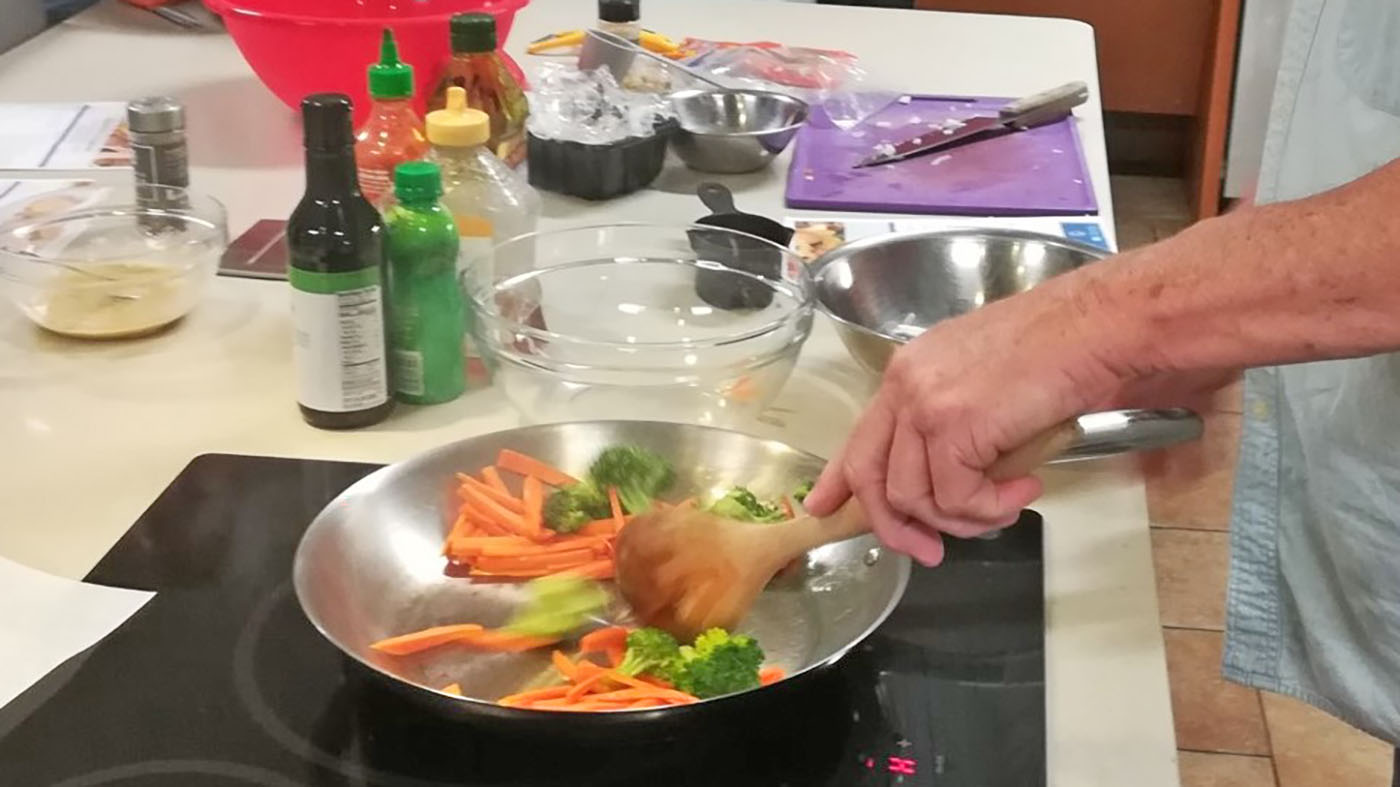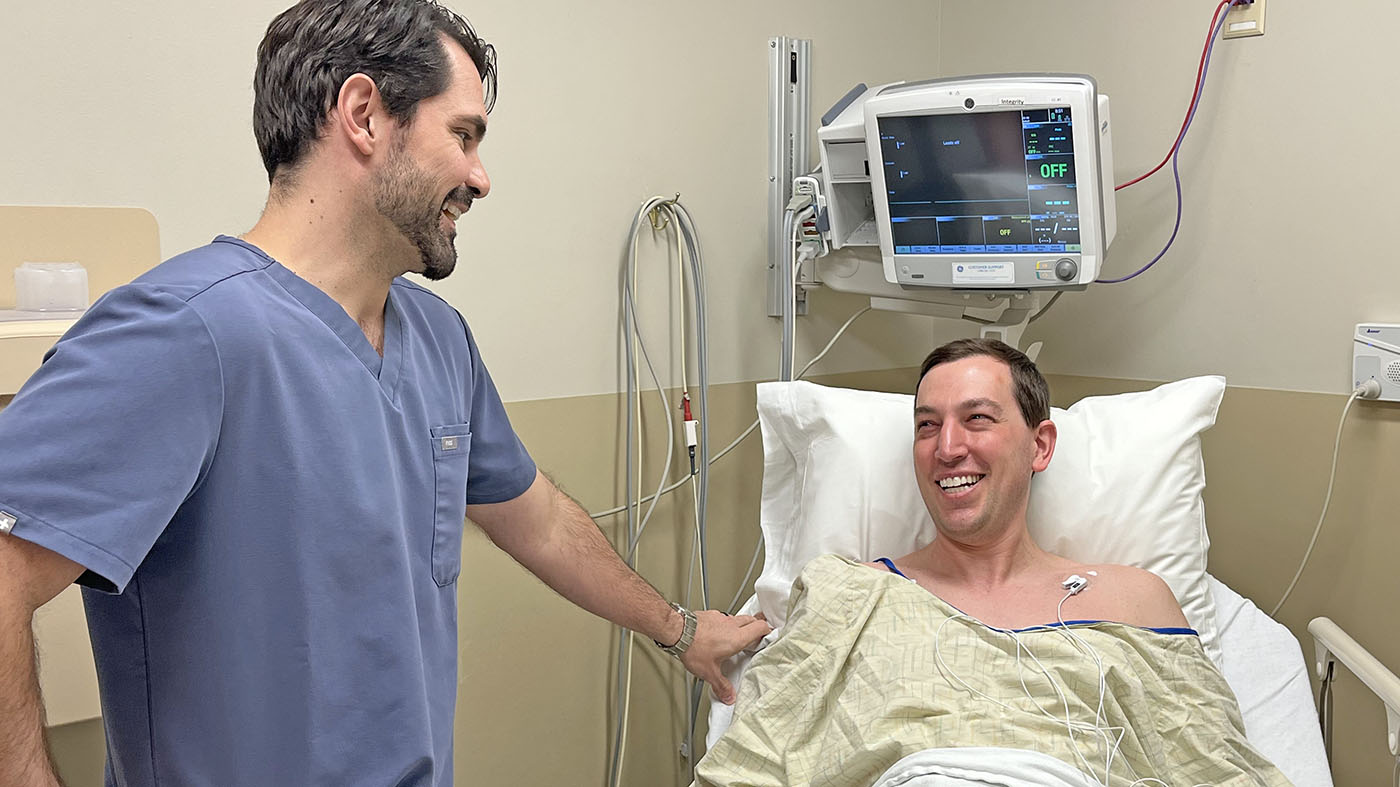Since World War II, VA has worked to improve prosthetics for Veterans who have suffered limb loss. VA has been a leader in prosthetics, establishing the first VA prosthetic testing and development lab in New York in 1947, standing up 30 multi-disciplinary amputee clinics set up across the country in 1948, and debuting the first self-contained and self-suspended trans-radial myoelectric prosthesis in 1968.
VA has made many advancements in prosthetics since then, including prosthetics that allow for high heels and that mimic the natural movement of the ankle for easier walking. But issues with functionality remain. Among the challenges reported is the inability to receive sensory feedback, or “feel,” with the prosthetic limb.
The inability to feel can make everyday tasks difficult and leave the user feeling disconnected from the artificial limb. A study of Veteran amputees found that while they were satisfied with their prostheses, nearly half used them less than 9 hours a day. Dr. Dustin Tyler of the Cleveland VA and Dr. Jacob Segil of the Rocky Mountain Regional VA are combining their expertise to bring a new technology to the field to improve the connection between Veterans and their prosthetics.
VA Does That: The bionic hand
Dr. Segil, a mechanical engineer, is designing a prosthetic hand system that can send feedback to the brain, creating the sense of touch. His work connects to Dr. Tyler’s: the nerve cuff electrode. This technology allows for electrical signals to be sent to electrodes surrounding the nerves and then to the brain, creating the feeling of touch.
Several people have received the implants necessary to utilize the new technology and early results are promising. Using only these electrical signals, one of them was able to identify the position of a hidden prosthetic hand with 95-percent accuracy. Further, another reported that the “phantom pain” from his missing limb was relieved after use.
VA will do that: Continuing to improve quality of life
Improving the quality of life for Veterans and others living with limb loss is at the core of the prosthetics team’s work. Dr. Segil’s new research focuses on how to make prosthetics feel more like an extension of the human.
“Sensory-enabled prosthetic limbs provide a new ability to restore not only function, but also a sense of wholeness for the person with amputation,” Segil said. “This is the ultimate goal of our field, to restore what was lost, and the sensory systems developed by Dr. Tyler’s team are our best tool to date to achieve it.”
Topics in this story
More Stories
VA promotes early nutrition intervention for chronic kidney disease with targeted programs like Heathier Kidneys Through Your Kitchen.
VA Research Advisory Committee on Gulf War Veterans’ Illnesses hosting Veteran Engagement Sessions in Phoenix for 1990-91 Gulf War Veterans.
Navy Veteran and president of the American Medical Association got a colonoscopy and encourages other Veterans to do the same.







1969–PT and OT were places to learn how to put a pair of pants on over new legs, how to Ace-wrap a stump, how to button a shirt with one hand and one hook, how to shave, how to hold a fork and spoon, get out of a wheelchair and sit on a toilet, take a shower with no legs under you, brush your teeth and comb your hair, make your bed and fold your clothes, how to put a shoe on a plastic foot, strap an artificial arm or leg harness to your shoulders, how to walk again.
The rehab wards gave guys time and personal space to re-learn everything that used to be routine. Frustration could be heard by the crashing of a wooden leg being slammed to the floor or a hooked forearm being smashed against a locker door.
Every evening the artificial legs and arms were removed and the stump areas were wrapped with elastic bandages to keep the swelling down. A swollen stump meant you couldn’t get a leg or an arm back on in the morning for PT or for getting the hell out of that wheelchair for a while.
Legs were usually stored standing upright, “on foot,” at the side of the bed, the arms were hung over the bottom rail at the foot of the bunk.
Thank you for the tremendous progress for our wounded veterans.